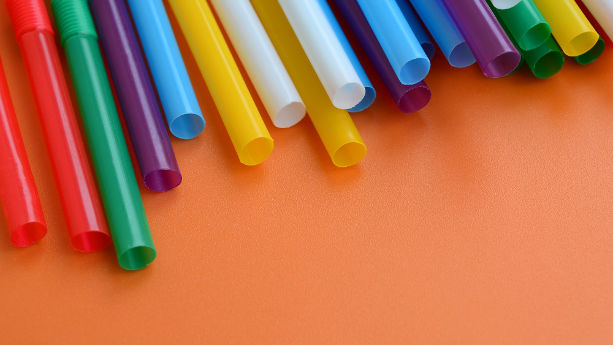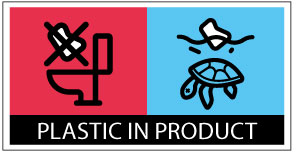
The Single-Use Plastics Directive contains specific requirements and prohibitions that affect the manufacturing and importation of single-use plastic products, oxo-degradable plastics products, and fishing gear. These are products that are used only once or are used for a short period before being discarded.
This guide covers the Single-Use Plastics Directive and explains how it relates to certain plastic products. Additionally, we refer to implementing measures and commission guidelines and address common questions related to the Directive.
Content Overview

FREE CONSULTATION CALL (US, EU & UK)
- Request a free 30-minute call with Ivan Malloci to learn how we can help you with:
- Find product requirements
- Certification and labeling
- Lab testing
What is the Single-Use Plastics Directive?
The Single-Use Plastics Directive contains several measures aimed at preventing and reducing the impact of certain plastic products on the environment. The directive’s provisions target both producers and EU member states.
It contains restrictions for certain products, product design requirements, marking requirements, and extended producer responsibility (EPR) requirements.
Which products are covered?
The Directive covers certain single-use plastic products, oxo-degradable plastic products, and fishing gear containing plastic. The definitions are contained in Article 3:
(2) ‘single-use plastic product’ means a product that is made wholly or partly from plastic and that is not conceived, designed or placed on the market to accomplish, within its life span, multiple trips or rotations by being returned to a producer for refill or re-used for the same purpose for which it was conceived;
(3) ‘oxo-degradable plastic’ means plastic materials that include additives which, through oxidation, lead to the fragmentation of the plastic material into micro-fragments or to chemical decomposition;
(4) ‘fishing gear’ means any item or piece of equipment that is used in fishing or aquaculture to target, capture or rear marine biological resources or that is floating on the sea surface, and is deployed with the objective of attracting and capturing or of rearing such marine biological resources;
Here are some examples of single-use plastic products that are covered by the Directive:
- Cotton bud sticks
- Cutlery, plates, straws and stirrers
- Balloons and sticks for balloons
- Food containers
- Cups for beverages
- Beverage containers
- Plastic bags
- Packets and wrappers
- Wet wipes and sanitary items
Restricted products
The Directive bans the sale of single-use plastic products listed in Part B of the Annex and products made with oxo-degradable plastics.
Here is a list of single-use plastic products that are prohibited:
- Cotton bud sticks
- Cutlery
- Plates
- Straws
- Beverage stirrers
- Balloon sticks
- Food containers made with expanded polystyrene
- Cups and containers for beverages with expanded polystyrene
Product requirements
The directive contains specific design requirements for single-use plastic beverage containers that have both:
a. A capacity of up to three litres
b. Caps or lids made of plastic
EN 17665 – Packaging – Test methods and requirements to demonstrate that plastic caps and lids remain attached to beverage containers
The above-mentioned products must be designed in a manner that the caps and lids remain attached to the container during its intended use stage, in accordance with the requirements set by EN 17665.
The standard, which is harmonised under the directive, contains test methods to ensure that caps or lids remain attached to the beverage containers. It addresses the strength, reliability and safety of beverage container closures.
The product is presumed to satisfy the directive’s product requirement if the above standard is applied.
Recycled content
From 2025 onwards, the following beverage bottles with a capacity of three litres (including their caps and lids) that are manufactured from polyethylene terephthalate (PET) as the major component must contain a certain amount of recycled plastic:
a. Those made out of glass or metal that have caps and lids made from plastic
b. Those that are intended and used for food for special medical purposes
After 2030, the requirement would affect beverage containers mentioned in points a. and b. regardless if they are manufactured from PETs.
Marking requirements

Example of marking label – It applies to sanitary towels (pads) and wet wipes (Commission Implementing Regulation (EU) 2020/2151)
The directive requires that certain single-use plastic products or their packaging be marked to indicate:
a. The appropriate waste management options available
b. The presence of plastics in the product
c. The resulting negative impact of littering on the environment
The following products are affected by the marking requirement:
- Sanitary towels (pads)
- Tampons and tampon applicators
- Wet wipes (pre-wetted personal care and domestic wipes)
- Tobacco products with filters
- Filters marketed for use in combination with tobacco products
- Cups for beverages
Further details related to the marking requirement are contained in Commission Implementing Regulation (EU) 2020/2151.
Extended producer responsibility
The directive requires EU member states to establish extended product responsibility (EPR) schemes for certain single-use plastic products and fishing gear containing plastic.
For example, in Germany EPR requirements will be enforced from 1 Jan 2025 onwards. The EPR rules include registration requirements and fees.
The requirement affects the following products:
- Food containers
- Packets and wrappers
- Beverage containers with a capacity of up to three litres
- Cups for beverages
- Lightweight plastic carrier bags
- Wet wipes (pre-wetted personal care and domestic wipes)
- Balloons
- Tobacco products with filters
- Tobacco filters
Under the directive, EU member states have to ensure that EU producers selling in another EU member state should approach an authorised representative in that other member state. The representative is responsible for fulfilling the obligations of the producer.
Product testing
For products affected by the directive’s product requirements, the products can be tested based on the standard EN 17665. By engaging testing services, you can expect to retrieve test reports. Test reports can be used to show that we have complied with the product requirements of the directive.
Testing companies
Here are some testing companies that offer testing services related to the requirements of the directive:
- SGS
- Measurlabs
- Eurofins
FAQ
How do I know if my product is single-use plastic?
Based on the definition contained in Article 3(2) of the directive, single-use plastic products are products that are used once or for a short period before being disposed of. If you are uncertain whether a product would qualify under the directive as a single-use plastic product, the commission guidelines on single-use plastic products can be referred to.
The guideline contains a number of examples of products that qualify as single-use plastic products, such as:
- Beverage stirrers
- Cotton bud sticks
- Cups for beverages made of expanded polystyrene, including their covers and lids
- Cutlery
- Food containers
- Food containers made of expanded polystyrene
- Packets and wrappers
- Plates
What can happen if I import or manufacture non-compliant single-use plastics?
The directive requires EU member states to create rules on penalties for infringements of national provisions related to the directive. For example, there could be penalties on products that do not conform to the product requirements for beverage containers with caps or lids.
This means that importing or manufacturing prohibited or non-compliant single-use plastic products could trigger penalties at the EU member state level. Furthermore, EU member states may have differing penalties.
















